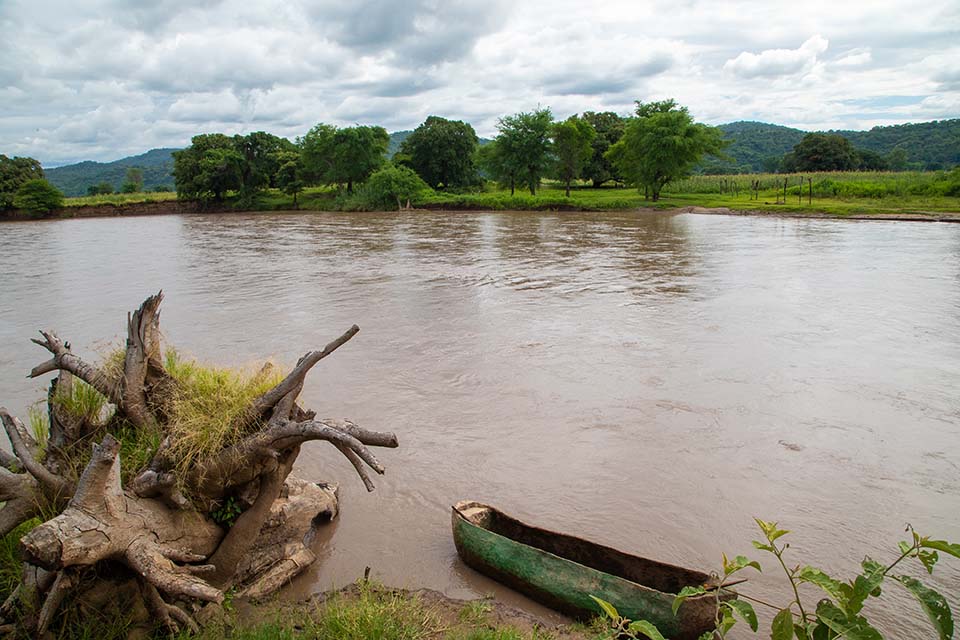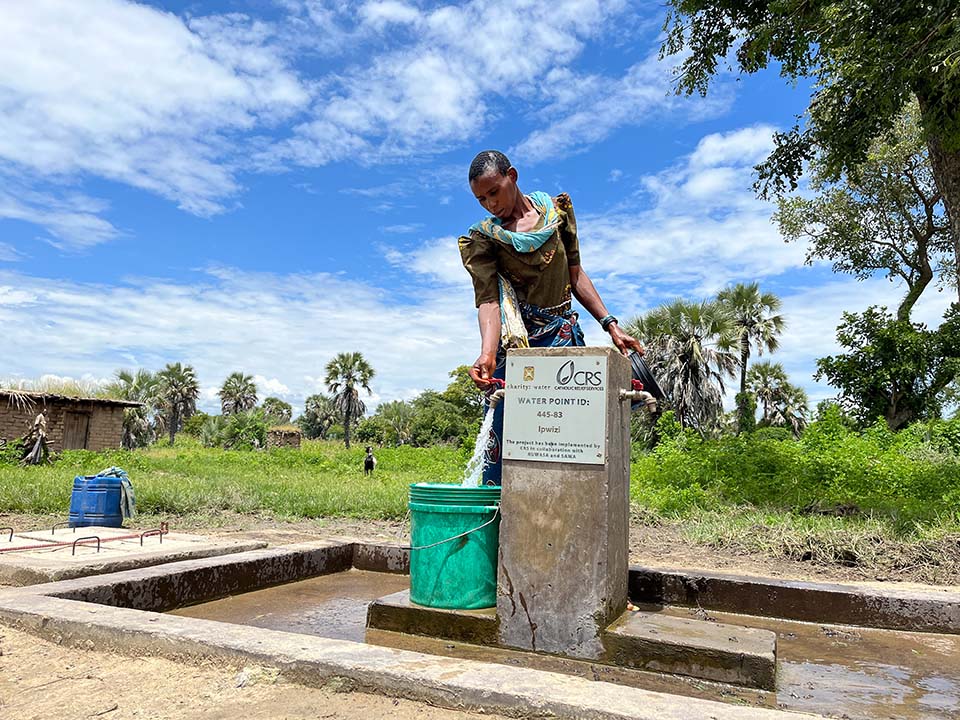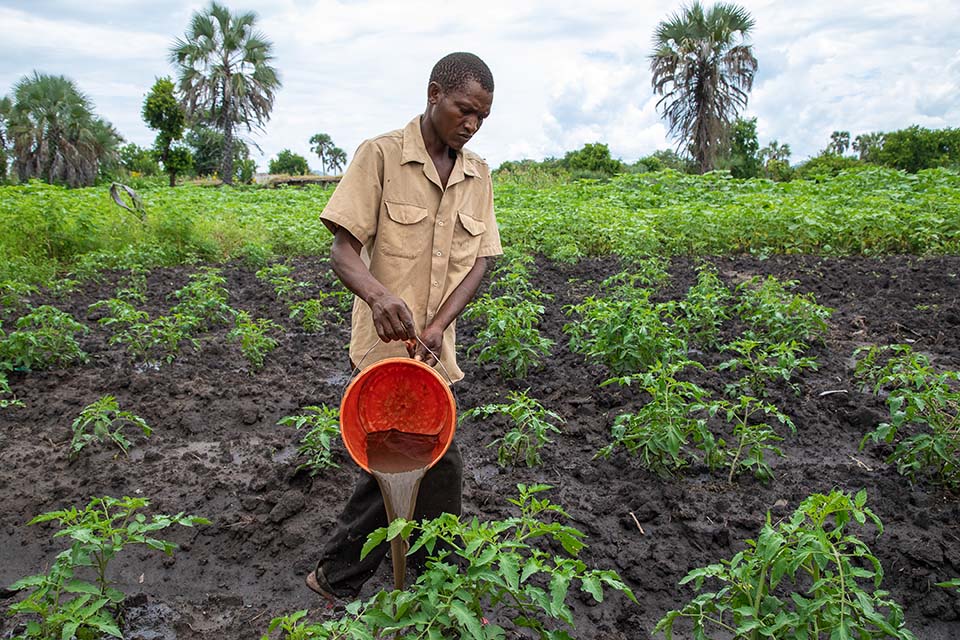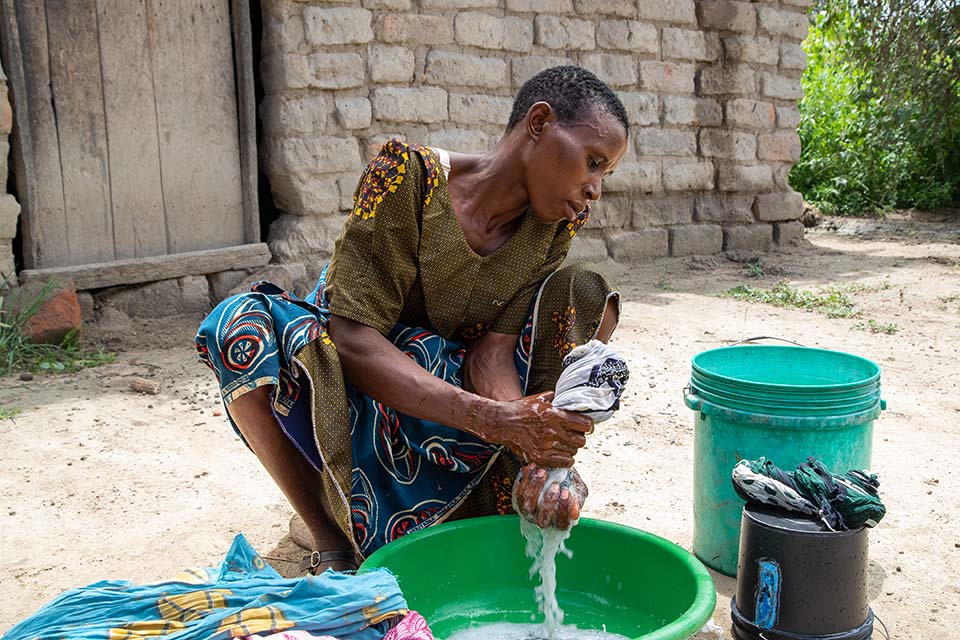

Clean Water, Improved Lives in Tanzania
Every other day, Madade Njile and his wife Esther woke at five o’clock in the morning to start their three-mile trek to a nearby river. It was the closest source of water to their home in Ipwizi village in Tanzania.
They spent their morning filling containers with the murky water and also used the opportunity to bathe and do laundry.
“We were always praying to God not to be caught by crocodiles,” Madade says.

The people of Ipwizi village, Tanzania, used to walk to this river for all their water needs, including bathing, cooking and washing clothes. Some families walked more than three miles each way.
Photo by Carlos Barrio/CRS
The couple, who have four children, estimate that they need at least eight gallons of water per day just for cooking and drinking.
When they had access to a donkey-drawn cart, they would bring back about thirteen gallons of water from the river. On foot or bike, they were limited to about five gallons. It was never enough.
In both cases, the trip back home in the hot afternoon sun took hours. The heavy containers weighed them down. It was often early evening before they got home, which then meant making dinner and doing other household chores. The couple had little free-time time to work to provide for their children.
And because the river water was not safe for drinking, the family often suffered from intestinal problems, such as diarrhea, and other water-borne diseases like cholera.
“We knew our water was contaminated, but we had no choice,” Madade says.

Esther Njile fills a bucket from a clean water source that CRS installed next to her home in Ipwizi village, Tanzania.
Photo by Jennifer Lazuta/CRS
Then, in September 2022, Catholic Relief Services and our local partners, with support from charity: water, installed 83 water points to provide the community with easy access to safe and clean water, sanitation and hygiene. One water point was installed just a few hundred meters from Madade and Esther’s home.
The water that flows from the faucet is crystal clear. The buckets fill in seconds. The walk home takes mere minutes.
“At first, it was like a dream because several times people came and said there would be water but there wasn’t,” Madade says. “Our health now is getting better because of having clean and safe water in the village. Most important is every day waking up knowing that we can farm or work—not fetch water.”

Madede K. Njile waters his tomato plants using runoff from the clean water source that CRS installed next to his home in Ipwizi village, Tanzania.
Photo by Carlos Barrio/CRS
Their lives have improved since the water source was installed. Madade has started a tomato garden, which he irrigates using runoff from the pump. For the first time, the family have year-round access to fresh vegetables. Their cattle and goats finally get enough water to drink. Now that they have water to make bricks, the family will soon begin constructing a house made of cement.
And Esther, for the first time, can wash clothes, do dishes and bathe her children at home each day—without worrying about running out of water. She says that she enjoys having more time to spend together as a family.
“I feel so happy,” she says, waving in the direction of the water source and smiling.

Esther Njile washes clothes using water from a clean water source that CRS installed next to her home in Ipwizi village, Tanzania.
Photo by Carlos Barrio/CRS
Funded by charity: water, Catholic Relief Services is partnering with the Rural Water Supply and Sanitation Agency of Tanzania, the nongovernmental organization Sanitation and Water Action Tanzania, and local government authorities to implement a project with the goal of improving water supply and sanitation services in rural communities in Mbeya, Chunya and Mbarali districts in the Mbeya Region in Tanzania.
In the next five years, the project plans to help 148,000 people in rural communities by providing them with safe water. This will be achieved by building, fixing, and expanding water supply systems. Additionally, the project aims to improve sanitation and hygiene services in the community and schools by constructing and rehabilitating sanitation facilities and promoting better hygiene practices. The project also intends to enhance the capabilities of community-based committees responsible for managing water systems, sanitation, and hygiene. In the first year, the project reached 13,834 individuals through three water systems, and one school received improved sanitation facilities. Additionally, three community-based water supply organizations and four community-led total sanitation committees were created. The project also provided training on sanitation and hygiene to 349 individuals.

